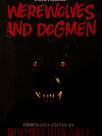
Six decades before the AMC’s Walking Dead, SyFy’s Paranormal Witness, late-night radio’s Coast to Coast AM, and countless websites, blogs, books, and movies began captivating audiences with true tales of the paranormal — there was FATE — a first-of-its-kind publication dedicated to in-depth coverage of mysterious and unexplained phenomena.
FATE was a true journalistic pioneer, covering issues like electronic voice phenomena, cattle mutilations, life on Mars, telepathic communication with animals, and UFOs at a time when discussing such things was neither hip nor trendy like it is today. Recently, FATE celebrated the 65th anniversary of its founding and the publication of its 776 issue, a rare feat of longevity achieved by only a select few U.S. periodicals.
Where it all began: The birth of the modern UFO era
The year was 1948. The Cold War was in its infancy, and the Space Age was still a dream…but across the nation and around the world, people observed strange objects flying through the skies.
Two Chicago-based magazine editors, Raymond A. Palmer and Curtis B. Fuller, took a close look at the public’s fascination with flying saucers and saw the opportunity of a lifetime. With help from connections in the worlds of science fiction and alternative spirituality, they launched a new magazine dedicated to the objective exploration of the world’s mysteries. They gave their “cosmic reporter” the name FATE.
FATE’s first issue, published in Spring 1948, featured as its cover story the first-hand report of pilot Kenneth Arnold on his UFO sighting of the previous year, an event widely recognized by UFO historians as the birth of the modern UFO era.
FATE’s role in creating a new genre: The paranormal.
Other topics covered in this and subsequent issues included vanished civilizations, communication with spirits, synchronicity, exotic religions, monsters and giants, out-of-place artifacts, and phenomena too bizarre for categorization. This mix of subjects set a template that the magazine would follow for six decades and counting. In many ways, FATE magazine created the genre that is now known as “the paranormal.”
Palmer and Fuller’s judgment of FATE’s potential proved correct, and as demand for the magazine grew its publication frequency increased quickly from quarterly to bimonthly to monthly. Palmer sold his share of the magazine in the late 1950s, and Fuller brought his wife Mary aboard to help run the growing business.
FATE’s success spawned scores of imitators over the years, but none lasted very long. Through the decades FATE kept going, doggedly promoting the validity of paranormal studies but unafraid to reveal major events as hoaxes or frauds when it was warranted. Among the famous cases debunked by FATE were the Philadelphia Experiment, and the book and movie versions of the Amityville Horror.
Relevant today
So how does FATE still stay relevant after all this time? Especially in a fast-paced, high-tech world that is often short on attention span and long on cynicism, how does a magazine like FATE continue to thrive? Editor-in-Chief Phyllis Galde says, “FATE allows readers to think for themselves by providing them with stories that mainstream publications don’t dare touch. The truth is, reality does not conform to the neat and tidy box that many people would like to wedge it into. Our world is a bizarre and wondrous place and our universe is filled with mystery — it is teeming with the unknown. People are longing for something more than the mundane transactions of everyday existence. FATE feeds the soul’s appetite for the enigmatic, the esoteric, and the extraordinary.”
"My mother used to read Fate magazine Which was about the paranormal, flying saucers, and all that stuff. She would read the stories to me and I was fascinated." -Stephen King
If you have a questions, please feel free to contact us!
612-965-5515












